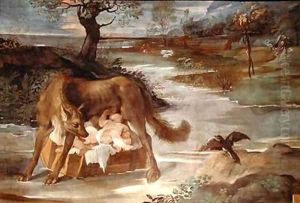Ago. Ann. & L. Carracci Paintings
The Carracci were a family of celebrated Italian Renaissance painters from Bologna, who played a pivotal role in the development of the Baroque style. Agostino, Annibale, and Lodovico Carracci were cousins who worked closely together to forge a new artistic direction that was a reaction against the Mannerist style prevalent during their time.
Lodovico Carracci, born in 1555, is often considered the head of the family, being the eldest. He was a pupil of Prospero Fontana in Bologna and later traveled to Florence and Parma to study the works of the masters such as Correggio and Parmigianino. Returning to Bologna, he was instrumental in the founding of the Accademia degli Incamminati (Academy of the Progressives) in 1582, which was a school that aimed to combine the best elements of Florentine and Venetian style, emphasizing a return to naturalism and a move away from the artificial elegance of Mannerism.
Agostino Carracci, born in 1557, was not only a talented painter but also an engraver. He trained under his cousin Lodovico and later with the Venetian artist Domenico Tintoretto. Agostino was highly influenced by the works of Correggio and the Venetian School; his engravings helped to disseminate the Carracci's new style of painting. He collaborated with Annibale on several projects, including the decoration of the Palazzo Farnese in Rome, which is considered one of the masterpieces of Italian art.
Annibale Carracci, the youngest, born in 1560, was perhaps the most renowned of the three. He also studied under Lodovico and was deeply influenced by his travels to Parma, Florence, and Venice, absorbing the works of Renaissance masters like Titian and Veronese. Annibale was known for his dynamic compositions and his ability to imbue his figures with a sense of life and movement. His most famous work is the ceiling frescoes in the Galleria Farnese of Palazzo Farnese in Rome, completed with the help of Agostino. These frescoes are celebrated for their grandeur and for the illusionistic use of perspective.
The Carracci's legacy lies in their innovative approach to painting, which combined a robust naturalism with classical harmony and balance. They were among the first to move away from the artificiality of Mannerism towards a more realistic representation of subjects. Their work had a profound influence on later artists and helped to lay the groundwork for the Baroque movement. The Accademia degli Incamminati, their teaching institution, propagated their ideas and techniques, shaping the direction of Italian art for the ensuing century. The Carracci family, with their synthesis of north Italian and classical styles, were a bridge between the High Renaissance and the Baroque, and their influence continued to resonate through the works of their students and followers.
